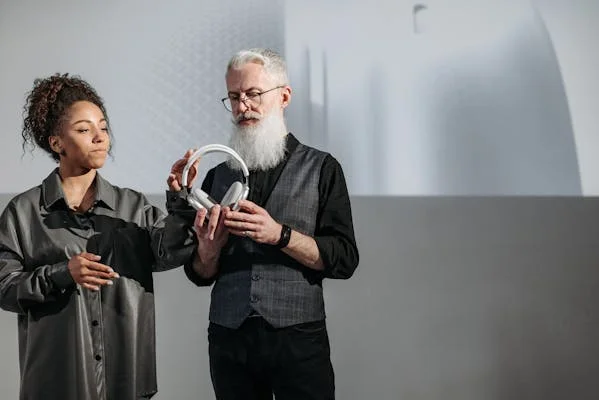Whether you’re a professional drummer, an aspiring musician, or a drum technician, having the right studio work space is essential for honing your craft and ensuring quality performances. A well-designed drum tech studio not only provides comfort and functionality but also allows for creative freedom. But what makes a drum tech studio work space truly effective? Let’s dive deep into the key elements you need to create the perfect environment for both setup and tuning.
What is a Drum Tech Studio Work Space?
A drum tech studio work space is a specialized area designed for the maintenance, tuning, repair, and setup of drum kits. It can range from a small corner in a home studio to a professional-grade setup equipped with the latest tools and technologies. The goal is to have everything a drum tech needs to prepare drums for recording, rehearsals, or live performances. This includes not just tools for maintenance, but also acoustic treatment for optimal sound quality and ergonomics for the technician’s comfort.
The Importance of a Dedicated Drum Tech Studio Work Space
The demand for drum technicians has been steadily rising in both the live performance and studio recording industries. Having a dedicated space ensures that the drums are always in top condition, and it allows technicians to work efficiently without distractions. Moreover, it helps musicians collaborate seamlessly with technicians to achieve the perfect sound for any project.
Benefits of a Well-Equipped Drum Tech Studio:
- Precision Tuning: A properly designed workspace makes it easier to tune drums accurately, ensuring the best sound possible.
- Efficient Workflow: A dedicated studio setup enhances productivity by organizing tools and supplies in one accessible location.
- Comfort for Long Hours: Drummers and technicians often work long hours, so creating an ergonomic and comfortable workspace is crucial.
- Better Sound Quality: Acoustic treatment in the studio can make a huge difference in the sound and acoustics of the drums.
Key Components of a Drum Tech Studio Work Space
1. Adequate Space for Equipment and Drums
A key feature of any drum tech studio is having sufficient space for storing drums, stands, pedals, and other equipment. Your space should have enough room for assembling and disassembling drum kits without feeling cramped. Ideally, it should also have space for multiple drum kits or even a permanent setup where the technician can work on more than one kit at a time.
2. Tool Storage and Organization
As a drum tech, you need access to a variety of tools such as drum keys, lug wrenches, tuning mutes, drumhead replacements, and a range of percussion accessories. Having a well-organized tool area is crucial. Wall-mounted pegboards, toolboxes, and drawer systems can keep everything within arm’s reach while maintaining a clutter-free environment.
Essential Tools for a Drum Tech Studio:
- Drum Keys and Tuning Kits
- Snare Drum Tighteners
- Drumhead Removal Tools
- Cleaners and Polishing Supplies
- Lug Lubricants
- Drum Rims and Hoop Adjusters
3. Soundproofing and Acoustic Treatment
Acoustic treatment is crucial for any drum tech studio. Proper soundproofing ensures that the noise from the drums doesn’t interfere with nearby rooms or neighbors, while acoustic panels help control the sound within the room. Since drums are inherently loud, soundproofing your drum tech studio with thick walls, acoustic panels, bass traps, and isolation pads is a must.
Tips for Soundproofing Your Drum Tech Studio:
- Use acoustic foam panels on walls to absorb sound and prevent echo.
- Consider bass traps in corners to reduce low-frequency buildup.
- Install heavy curtains or soundproof windows to reduce outside noise intrusion.
- Use floor mats or drum risers to isolate the drums and prevent vibrations from traveling through the floor.
4. Lighting and Ventilation
Good lighting is essential for any work space, especially in a drum tech studio where precise tuning and maintenance are key. Opt for adjustable LED lighting to brighten up work areas without straining your eyes. Proper ventilation is also critical, particularly if the space is small or if you’re working with chemicals like cleaners or lubricants. Ensure there is adequate airflow to keep the environment fresh and comfortable.
5. Comfortable Seating and Ergonomics
Since drum technicians often spend long hours tuning and adjusting drums, ergonomic seating is essential. A high-quality chair with proper lumbar support can make a significant difference in productivity. Furthermore, an adjustable workbench that can accommodate different heights or tasks—whether you’re tuning a snare or assembling an entire drum kit—will keep you comfortable throughout the day.
6. Storage for Drum Kits and Accessories
A drum tech studio is not just a workspace; it’s also a storage area for all the drum kits and accessories you’ll work on. Consider installing shelving units, cabinets, or even a dedicated room for storing these items. Proper storage not only keeps everything organized but also prevents damage to the equipment.
Organizing Your Drum Tech Studio Storage:
- Use stackable bins for smaller accessories like drumheads, mallets, and cymbals.
- Install cabinets or shelving for larger items like drum kits, stands, and pedals.
- Label everything clearly for easy access, ensuring that tools and parts are always within reach when needed.
7. Power Supply and Cable Management
A reliable power supply and organized cable management are also essential elements of a drum tech studio. Many drum technicians rely on electronic drum kits, drum triggers, or even recording equipment that requires consistent power. Installing outlets in strategic locations and using cable management systems will ensure everything is plugged in and organized, preventing tangled cords from creating chaos.
8. Recording and Audio Equipment
While a drum tech studio is primarily focused on the maintenance and setup of drums, many technicians also perform recording tasks. Having a basic recording setup with microphones, audio interfaces, and mixing equipment can allow you to capture drum sounds and experiment with different setups. This can be invaluable for testing different drum tunings or setups before a performance or recording session.
Must-Have Recording Gear for Drum Tech Studios:
- Microphones: A set of quality microphones for capturing drum sounds.
- Audio Interface: For connecting your mics to a computer.
- Headphones or Monitors: To hear the drum sound in real-time.
- Mixing Console: For adjusting levels and EQ.
How to Set Up Your Drum Tech Studio Work Space
1: Choose the Right Location
First, pick a quiet, spacious area that is isolated from distractions. If you’re working in a home, consider converting a garage, basement, or spare room into your studio. Ensure there is enough room for movement and that the space is well-lit and ventilated.
2: Invest in Quality Equipment
Choose durable, professional-grade equipment that will stand up to heavy use. Whether it’s a high-end drum key or a sturdy workbench, investing in quality tools will save you time and money in the long run.
3: Optimize Acoustics
Install acoustic panels and bass traps to enhance the sound quality of your space. A well-treated room will make your drum setup sound clearer and more accurate.
4: Ensure Safety and Comfort
Set up your studio with comfort in mind. An ergonomic chair and a comfortable workbench will help prevent physical strain. Also, ensure that there is good airflow and proper lighting to maintain a healthy working environment.
Conclusion: Creating the Ultimate Drum Tech Studio Work Space
A drum tech studio work space is more than just a place to store equipment; it’s an environment that nurtures creativity, precision, and efficiency. Whether you’re fine-tuning drums for a major concert or recording drum tracks for a new album, having the right studio setup can elevate your performance and workflow. Investing in high-quality tools, soundproofing, and ergonomic furniture will not only improve the quality of your work but will also make the process more enjoyable.





